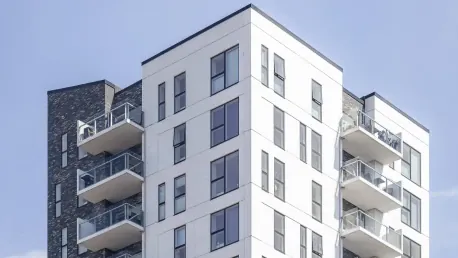Navigating the multifaceted landscape of environmental regulations can be daunting for commercial real estate (CRE) stakeholders. As governments push for stricter policies to reduce greenhouse gas (GHG) emissions, the built environment faces significant pressure to comply. Yet, within these regulatory requirements lie unique opportunities for the innovative use of technology. While the challenge is formidable, it is increasingly clear that proper strategies and technological solutions can transform these hurdles into avenues for growth and optimization within the CRE sector.
Understanding the Impact of Regulations
Environmental regulations targeting the CRE sector emphasize the pressing need to address climate change. The built environment’s contribution to greenhouse gas emissions has placed it under scrutiny, making regulatory compliance an immediate priority. However, unlike other countries that adopt standardized national laws, the U.S. follows a fragmented approach. This leaves states and municipalities to craft their own rules, resulting in a complex regulatory mosaic that businesses must navigate.
This decentralized approach creates a labyrinth of compliance for businesses operating nationwide. Companies cannot depend on a single set of standards, and they must adapt rapidly to state-specific and local mandates. This often involves significant operational adjustments and makes the regulatory landscape appear as an ever-changing puzzle. Consequently, the nuances of local jurisdiction regulations demand continual attention and adaptation from CRE stakeholders.
Fragmentation and Compliance Challenges
The decentralized nature of regulations in the U.S. poses a considerable burden on CRE stakeholders. Juggling different state and local mandates, navigating ongoing litigation, and adapting to shifting policies require substantial time, effort, and resources. This landscape not only necessitates comprehensive knowledge of various regulations but also a proactive strategy to ensure efficient compliance. Complex, inconsistent legislation creates a volatile environment, where companies must allocate considerable resources just to understand their obligations.
This patchwork of compliance requirements places a heavy burden on the administrative and operational capacities of businesses. The necessity to stay updated with each new piece of legislation, combined with the potential for substantial penalties for non-compliance, forces companies to invest heavily in compliance management. Additionally, ongoing litigation and shifting political climates create a constantly moving target, complicating long-term planning and consistent application of compliance measures.
Categories of Regulations
Key regulations impacting the CRE sector fall into two categories: environmental reporting and building performance. These two dimensions represent different but complementary approaches to reducing greenhouse gas emissions. Environmental reporting mandates the disclosure of emissions data, providing transparency and accountability regarding a building’s environmental impact. On the other hand, building performance regulations entail specific reductions in emissions from building operations, mandating measurable improvements in sustainability.
These dual regulatory pressures underscore the importance of adopting comprehensive compliance solutions. Businesses are required to monitor and report emissions accurately while simultaneously implementing strategies to reduce their environmental footprint. The challenge lies not just in meeting current regulatory requirements but also in anticipating future trends and ensuring that buildings are well-positioned to adapt to tightening regulations. This dual-pronged approach underlines the necessity for comprehensive, systematic solutions that address both aspects holistically.
Leveraging Technology for Compliance
Enter technology—specifically, Internet of Things (IoT) devices and Integrated Workplace Management Systems (IWMS). These smart building solutions offer CRE stakeholders the tools to monitor and manage compliance seamlessly. Real-time data and analytics provided by these technologies simplify the reporting process, ensuring adherence to strict performance standards. IoT devices deployed throughout a building can collect critical data on energy usage, occupancy, and environmental conditions, thereby facilitating timely and accurate environmental reporting.
Moreover, IWMS can centralize and streamline the management of this data, providing a cohesive overview of building performance. By integrating inputs from various internal and external sources, such systems offer actionable insights that not only help in regulatory compliance but also drive broader operational efficiencies. This synergy between IoT and IWMS platforms creates a powerful compliance tool, capable of dynamically adapting to changes in the regulatory landscape and mitigating the administrative burden on CRE stakeholders.
Benefits Beyond Compliance
Beyond meeting regulatory requirements, utilizing IWMS and IoT devices uncovers operational efficiencies. These technologies highlight areas for cost savings, optimize space utilization, and enhance overall sustainability. For example, energy consumption data paired with occupancy sensors can reveal patterns of waste, prompting actions to boost energy efficiency. Substantial cost savings can be achieved by making informed decisions regarding heating, cooling, and lighting based on real-time data.
Additionally, insights from environmental sensors can lead to improvements in indoor air quality, ensuring a healthier environment for occupants. This not only addresses regulatory compliance but also enhances tenant satisfaction and reduces potential liabilities. The operational benefits extend further, encompassing predictive maintenance, which helps identify and rectify issues before they become critical problems, thus reducing downtime and repair costs. In essence, the adoption of these technologies turns compliance into a strategic advantage, fostering a more sustainable, cost-effective real estate management approach.
Adapting to an Evolving Regulatory Landscape
As environmental regulations continue to evolve, the ability to swiftly adapt becomes crucial. The regulatory scenario is expected to tighten consistently, incorporating more stringent thresholds and broader coverage. Adoption of smart building technologies positions organizations to respond proactively to new regulations, avoiding compliance pitfalls and leveraging the opportunity to lead in sustainability. By staying ahead of regulatory trends, businesses can transform compliance from a reactive to a proactive endeavor, ensuring they are always in step with or ahead of new mandates.
Technological adaptability and scalability are key in this context. IoT devices and IWMS platforms can be updated with new protocols and standards, ensuring that the systems remain compliant with the latest regulations. This adaptability not only safeguards against compliance risks but also ensures organizations can continually optimize and enhance their operational performance. The ability to swiftly and robustly respond to regulatory changes is increasingly becoming a competitive differentiator in the CRE industry.
Future-Proofing Real Estate Management
Navigating the complex terrain of environmental regulations can be overwhelming for commercial real estate (CRE) stakeholders. With governments increasingly enacting stricter policies aimed at reducing greenhouse gas (GHG) emissions, the built environment is under considerable pressure to align with these new standards. Despite the challenges, these regulatory mandates also present unique opportunities to leverage innovative technologies. In fact, what initially seems like a formidable challenge can be transformed into avenues for growth and optimization within the CRE sector through strategically applied technological solutions. By approaching these regulations with the right mindset and tools, stakeholders can not only ensure compliance but also gain a competitive edge. Employing technologies such as energy monitoring systems, smart building solutions, and data analytics can lead to enhanced efficiency and sustainability. In sum, the intersection of environmental regulations and technological innovation holds the potential to drive the CRE sector towards a future that is both compliant and forward-thinking.









